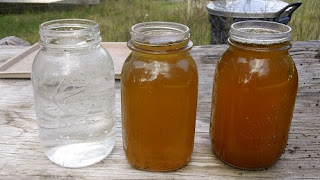The best ways to Make Simple Liquid Organic Fertilizer
Old-timers count on the products they had easily offered, such as manure and garden compost, to fertilize their farms and gardens. This custom is returning today as garden enthusiasts look for basic, safe gardening alternatives. Teas made from natural, organic products are a terrific method to provide nutrients to plants rapidly, without the threat of contaminating or burning plants groundwater.
Manure Tea
One of the earliest types of organic liquid fertilizer, manure tea provides plants a healthy shot of nitrogen and likewise increases microorganisms in the soil. Location a shovelful of composted chicken, cow or alpaca manure in a burlap bag, along with 2 tablespoons unsulphured molasses and 2 tablespoons sea kelp powder. Eliminate the burlap bag and garden compost the manure.
Garden compost Tea
Garden compost tea provides numerous of the very same advantages of manure tea, however, as the name indicates, relies on garden compost as its source of nutrients. Put 2 cups of top quality, live garden compost in a burlap bag and include 2 tablespoons molasses and 2 tablespoons sea kelp powder.
Enzymatically Digested Hydrolized Liquid Fish
Incorporate 5 tablespoons liquid fish with 1 gallon of water. Use the liquid fish as a foliar spray or water the ground straight.
Liquid Kelp
Liquid kelp does not consist of the macronutrients, phosphorus, potassium and nitrogen, normally discovered in fertilizers, however it does consist of development hormonal agents. Liquid kelp is rather pricey, however it's extremely handy for increasing sluggish development or motivating recovery after damage from hail or extreme wind. Mix 1 to 2 tablespoons liquid kelp with 1 gallon water and use it as a foliar spray.
Bat Guano
Bat gauno, or bat poop, is a great source of nitrogen or phosphorus, depending upon how it is processed. Its more pricey than other liquid organic fertilizers, however a little goes a long method. Mix 3 teaspoons per gallon of water and utilize it as a foliar spray.
Manure Tea
One of the earliest types of organic liquid fertilizer, manure tea provides plants a healthy shot of nitrogen and likewise increases microorganisms in the soil. Location a shovelful of composted chicken, cow or alpaca manure in a burlap bag, along with 2 tablespoons unsulphured molasses and 2 tablespoons sea kelp powder. Eliminate the burlap bag and garden compost the manure.
Garden compost Tea
Garden compost tea provides numerous of the very same advantages of manure tea, however, as the name indicates, relies on garden compost as its source of nutrients. Put 2 cups of top quality, live garden compost in a burlap bag and include 2 tablespoons molasses and 2 tablespoons sea kelp powder.
Enzymatically Digested Hydrolized Liquid Fish
Incorporate 5 tablespoons liquid fish with 1 gallon of water. Use the liquid fish as a foliar spray or water the ground straight.
Liquid Kelp
Liquid kelp does not consist of the macronutrients, phosphorus, potassium and nitrogen, normally discovered in fertilizers, however it does consist of development hormonal agents. Liquid kelp is rather pricey, however it's extremely handy for increasing sluggish development or motivating recovery after damage from hail or extreme wind. Mix 1 to 2 tablespoons liquid kelp with 1 gallon water and use it as a foliar spray.
Bat Guano
Bat gauno, or bat poop, is a great source of nitrogen or phosphorus, depending upon how it is processed. Its more pricey than other liquid organic fertilizers, however a little goes a long method. Mix 3 teaspoons per gallon of water and utilize it as a foliar spray.
